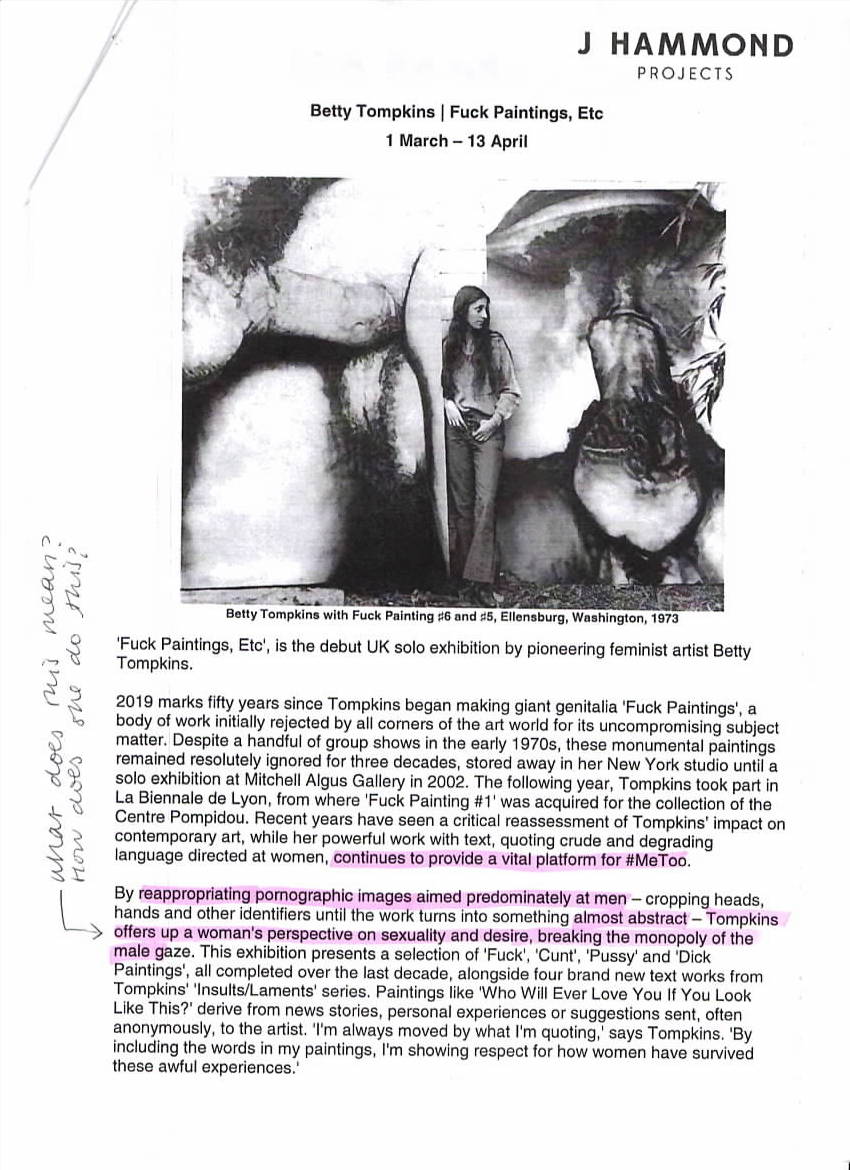

My initial reaction upon entering the exhibition space was one of shock, something I am not familiar with feeling in an art gallery, as these days it seems like nothing is shocking anymore. This is certainly not the first time I have seen nudity in art, but there was something about the way Betty Tomkins had so crudely cropped these penises and vaginas, removing them from their context (the person/ body) and blown them up to such a large scale, that was particularly jarring to the eye. It was hard to tell if the images were black and white photographs or paintings, which made them even more unsettling. At the time of making some of the earlier pieces in this exhibition, Tompkins received a lot of backlash from the 1970s feminist movement, accusing her of perpetuating the male gaze. However, modern critics now describe her work as ‘breaking the monopoly of the male gaze’. What caused this change in the public perception of Tompins’ work and why is it now heralded as ‘providing a vital platform for ‘#MeToo’ when it was once considered sexist? How can Tompkins really be ‘offering up a female perspective on sexuality and desire’ if she is using the same images that are used in porn aimed at men?
Perhaps it is simply that when a woman recreates objectifying images she appropriates the male gaze and takes charge of it simply by being a woman. However, what if the viewer does not know who made the artwork? Would we still be able to detect this ‘female gaze’?
Or could it be about the fact that she is painting (a traditional act of labour, skill and devotion) images from porn, something that belongs to dodgy websites that people clear from their browser history. Perhaps by blowing up these images and presenting them as art in a ‘civilized/ high culture’ context, Tompkins is moving these images from our private, secret realm and confronting us with our own complicity with the objectification of the female body. She asks us why we are willing to condemn sexual objectification in certain situations but seem to be willing to ignore it when it occurs in the context of porn.
How does this relate to my own work? I am interested in the fact that Tompkins’ work was perceived as sexist at the time of its conception, which introduces the idea of a woman herself as a perpetrator of sexism. I am interested in questioning whether this is in fact even possible, as well as examining to what extent the meaning of a stereotypically ‘male trope’, such as the male gaze, changes when it is taken on by a woman.